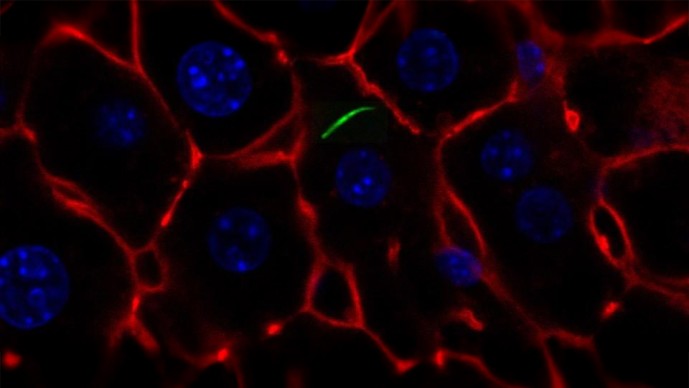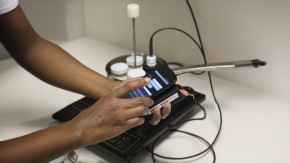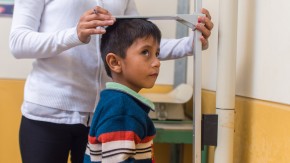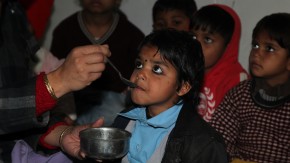
When we think about scientific innovation, we tend to imagine the future: new drugs, ground-breaking methods, technologies that push the boundaries of what is possible. But good researchers don't just look forward; they also reach into the past for inspiration - sometimes centuries into the past. That's exactly what Dr. Miguel Prudêncio and his colleagues at Lisbon's Instituto de Medicina Molecular are doing to create a approach to malaria vaccine development: they're taking their cue from the very first vaccine.
Malaria has been one of humanity's greatest killers, but so far creating vaccines for malaria has been challenging. Part of the reason is that malaria is caused by a parasite rather than a virus or bacterium, which means it's more complex than other diseases for which we have an effective vaccine. It also means malaria has an easy time defeating the medicines we create to fight it. It has already developed resistance to a number of drugs that were effective when first approved, and there's worrying evidence that the same thing is happening with the drug we currently use. Sometimes, no matter how hard we fight it, malaria can seem invincible.
But a few years ago, Prudêncio started thinking about a new way to fight it. Or, depending on how you look at it, a very old way. We all know the story from school: In the eighteenth century, smallpox ran rampant, killing millions around the world every year. Somehow, though, it never seemed to strike milkmaids - though they did get cowpox, a similar but much less dangerous bovine version of the disease. In 1796, a doctor named Edward Jenner started injecting people with cowpox, eventually proving that it protected them from infection by smallpox. We know now that this is in part because the antibodies his patients developed against cowpox were also effective against smallpox.
Prudêncio, looking to Jenner for inspiration, started to wonder: What if we could do the same with malaria? What if we could expose people to a version of the organism that causes the disease in animals but causes no serious effects in humans? Would they develop immunity to the more dangerous human variety? His boss thought the idea was intriguing, so he got to work.
The differences between smallpox and malaria complicated the process, but Prudêncio had the benefit of a little over two centuries of technological innovation, so he looked for ways to improve on Jenner's method. He took a closely related pathogen, the parasite that causes malaria in rodents, and genetically modified it in order to coat it with a protein from the parasite that causes malaria in humans - essentially dressing rodent malaria in a human-malaria costume. His hypothesis was that the human immune system would be fooled by the disguise and mount an aggressive response against human malaria.
Once Prudêncio had the new parasite, though, he had to test it. The usual method would be to use mice, but in this case that wasn't a possibility: the vaccine he was testing was made of rodent malaria, so instead of protecting the mice, it would actually give them malaria. So his team had to think of a workaround. What they came up with was rabbits because of the similarities between rabbits' and humans' responses to the rodent-malaria virus. (Malaria advances in stages: first it infects the liver, and only then does it move into the blood, at which point symptoms start to show. In both humans and rabbits, the rodent-malaria parasite infects the liver but never goes on to infect the blood.)
When Prudêncio inoculated rabbits with the new parasite disguised as human malaria, sure enough, the parasites never infected their blood, but they did induce the immune system to make antibodies to human malaria. He then extracted those antibodies and injected them into mice - but not just any mice. The mice had been "humanized"; that is, his team had transplanted human liver cells into them. This meant he now had mice that could contract human malaria, but he'd inoculated them with the rabbit-derived human-malaria antibodies, in the hope that this would make them immune.
Then came the crucial step: injecting the humanized, inoculated mice with human malaria to see whether the vaccine protected them. It did - the mice showed no signs of infection.
Since then, Prudêncio has run a number of other tests as well. Although rodent malaria doesn't cause disease in humans, for example, the introduction of the human malaria protein into the vaccine could conceivably create a risk of infecting humans. Prudêncio doesn't think that will happen, but he's verified that such malaria, however unlikely it is to arise, can be quickly and easily identified, treated, and cured.
So far, all Prudêncio's results have been very encouraging. So encouraging, in fact, that he and his colleague Dr. Robert Sauerwein at the University of Leiden in the Netherlands hope to begin recruiting for Phase I human trials this year. Of course there's a long way to go between Phase I trials and an approved vaccine, but I'm holding out hope that, before too long, humans may finally win the fight against the deadliest pathogen in history - in part because innovators didn't just look forward, they also looked back.



